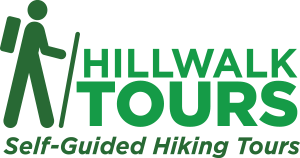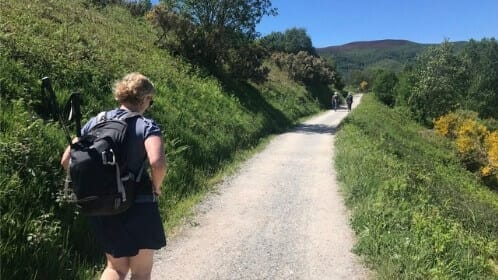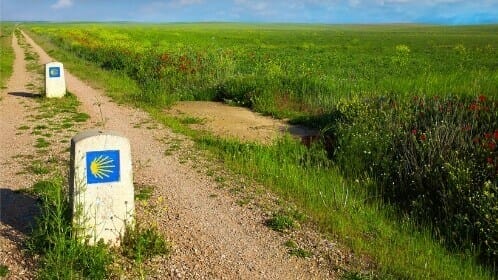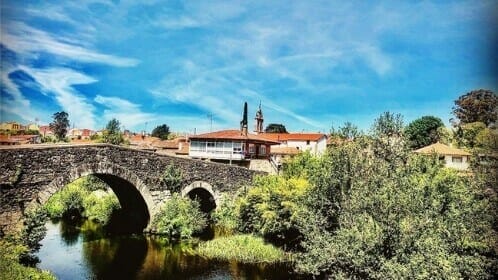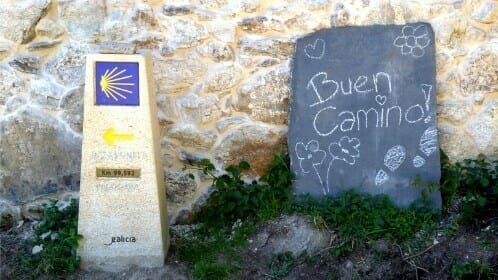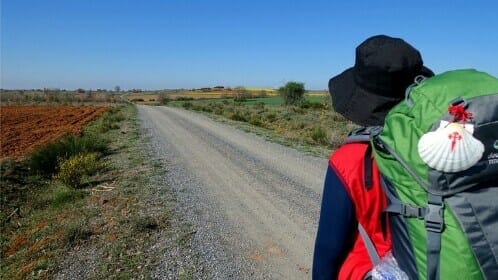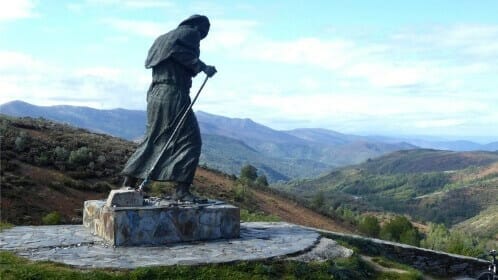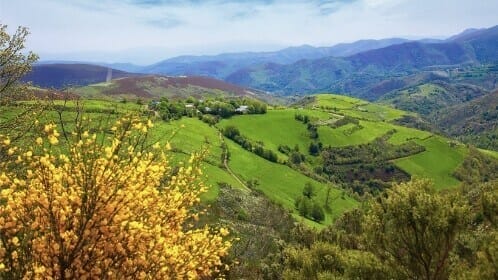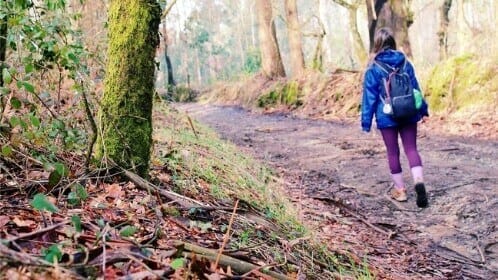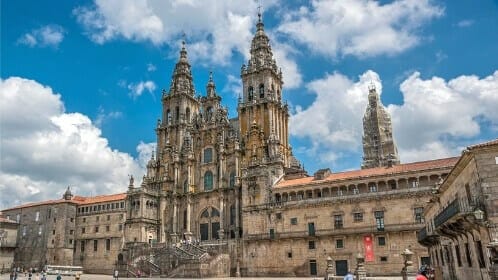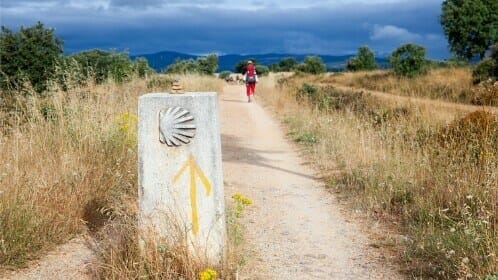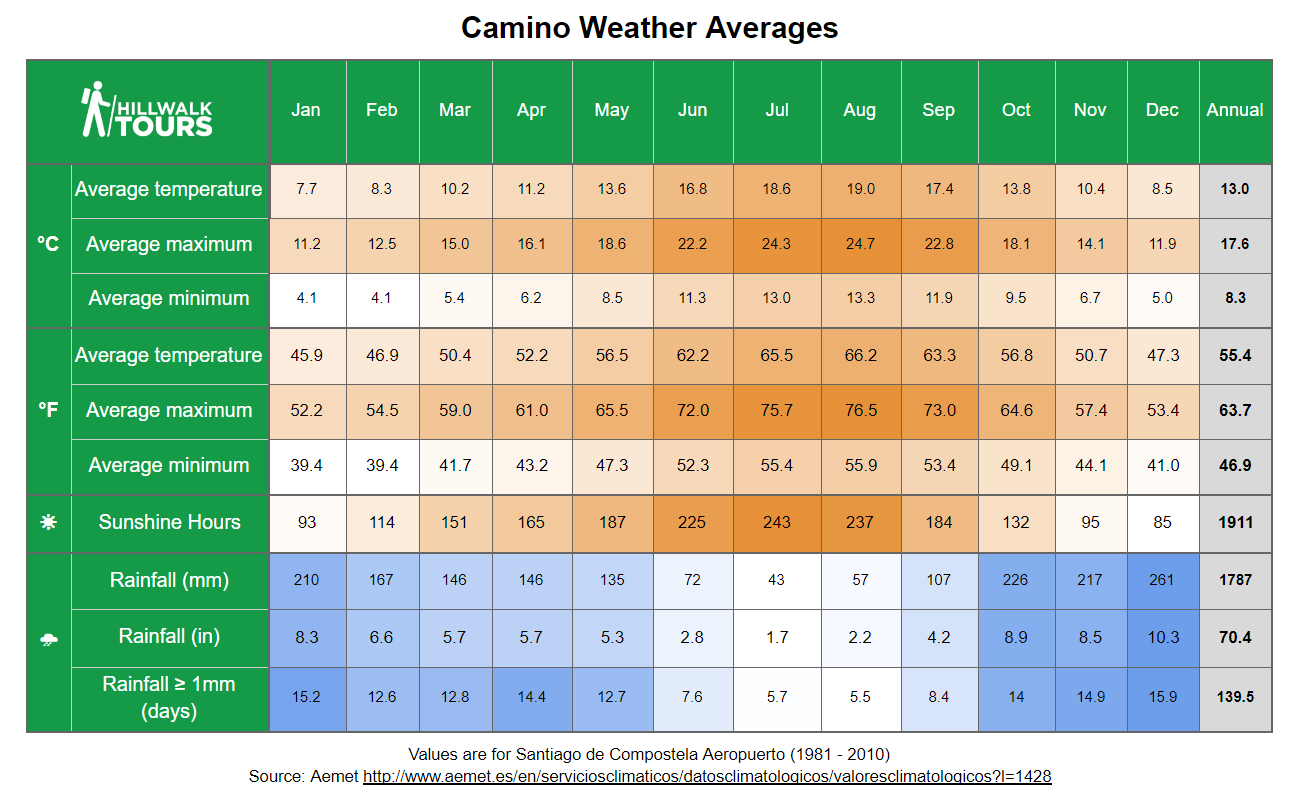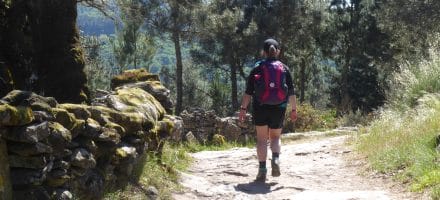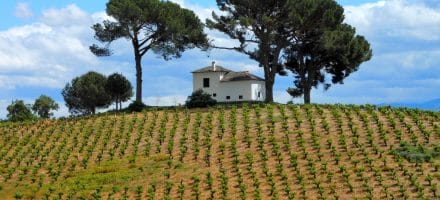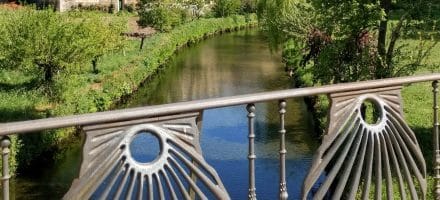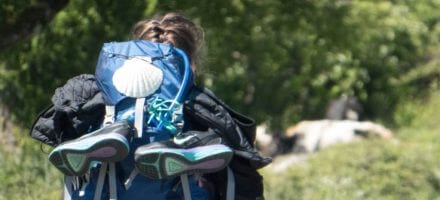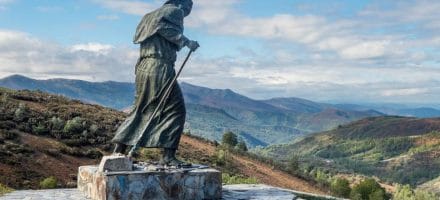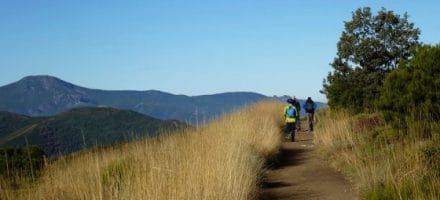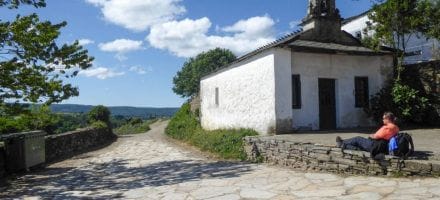The Route
The Camino Frances (or the French Way) begins on the French side of the Pyrenees, in Saint-Jean-Pied-de-Port. From there, it runs across the Pyrenees and continues through the north of Spain all the way to Santiago de Compostela, creating a walk that is, overall, almost 800km in length. The entire Camino Frances route can be completed within four to five weeks, passing through the major cities of Pamplona, Logrono, Burgos and Leon.
Our longest Camino walking tours start from the hamlet of O Cebreiro, one of the highest points on the Camino Frances. From here you will enjoy stunning mountain views as you descend along a mixture of tracks and footpaths to the village of Triacastela. There is a choice of routes from Triacastela to Sarria; the scenic northern route, through forests with woodland paths, or the southern route via the beautiful Samos Monastery.
Leaving Sarria, your walk to Portomarin will take you through many traditional Galician towns and villages on quiet rural roads and paths. The Camino then crosses the river Miño, passes through more hamlets and villages, and continues on country roads to Palas de Rei. On the next stage of the route you will pass through the market town of Melide and follow tracks and forest paths to Arzúa. The Camino Frances trail then continues through woodlands and villages, on country roads and forest tracks, to A Rua.
The final stage of the route will bring you to your destination, Santiago de Compostela, a UNESCO World Heritage site and home to many sights and attractions.
Terrain Overview
The terrain along the last 160km of the Camino Frances is well-suited for walking and includes woodland paths, tracks and lanes through pastures and villages, small rural roads and sandy footpaths that run parallel with roads.
The general feel of Galicia is often described as green, wooded and criss-crossed with old walled lanes. The Camino Frances in Galicia is often shaded, so it is cool and pleasant, even in the middle of the day during the summertime.
Unlike many modern long distance hiking routes, that might avoid large towns or villages, the ancient pilgrim routes like the Camino Frances pass through many settlements where shelter, food and refreshments are available. On some days on the Camino a pilgrim might pass 10 or 11 hamlets and villages.
The route of the Camino de Santiago through Galicia includes just a few steeper ascents and descents. There is one long but gentle descent before Triacastela and there are number of longer gradual climbs, particularly after Sarria and Portomarin. Total aggregate ascent over the last 160km of the Camino Frances is between 3,300m and 3,600m, depending on route choice. The highest point of the route is just outside O Cebreiro at 1,380m.
Elevation Profile

